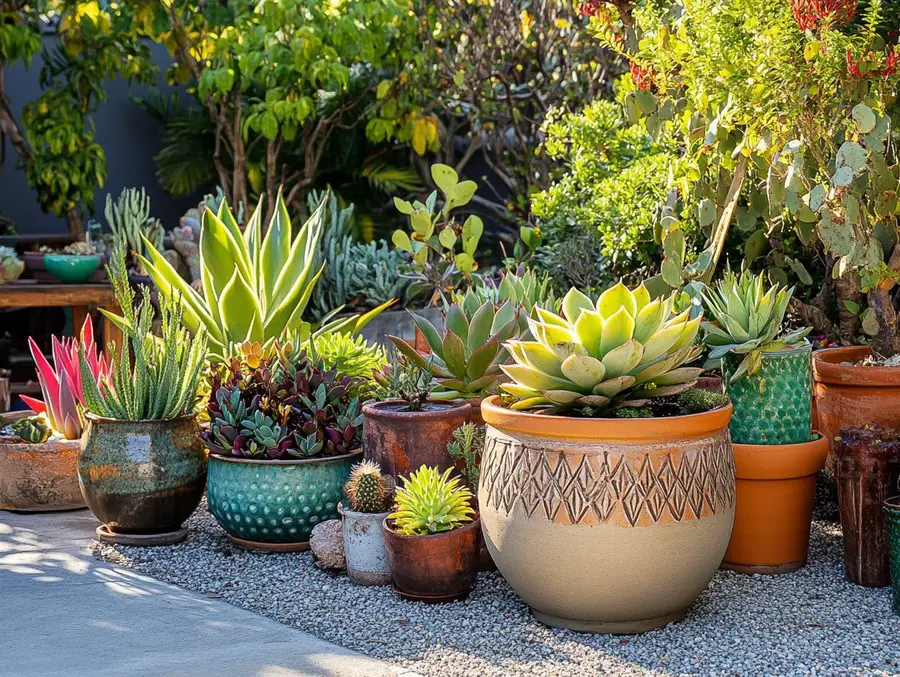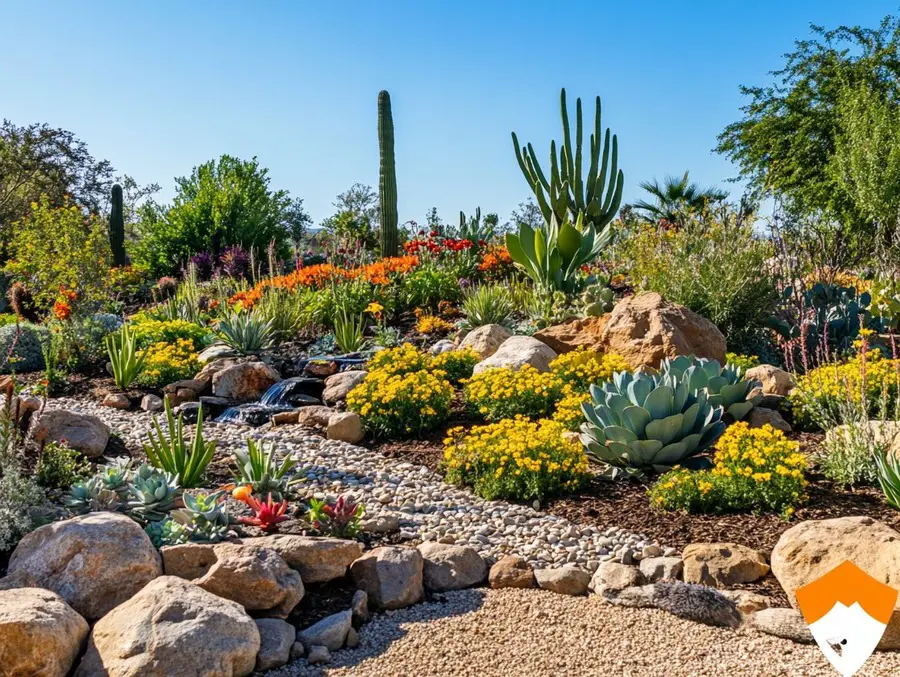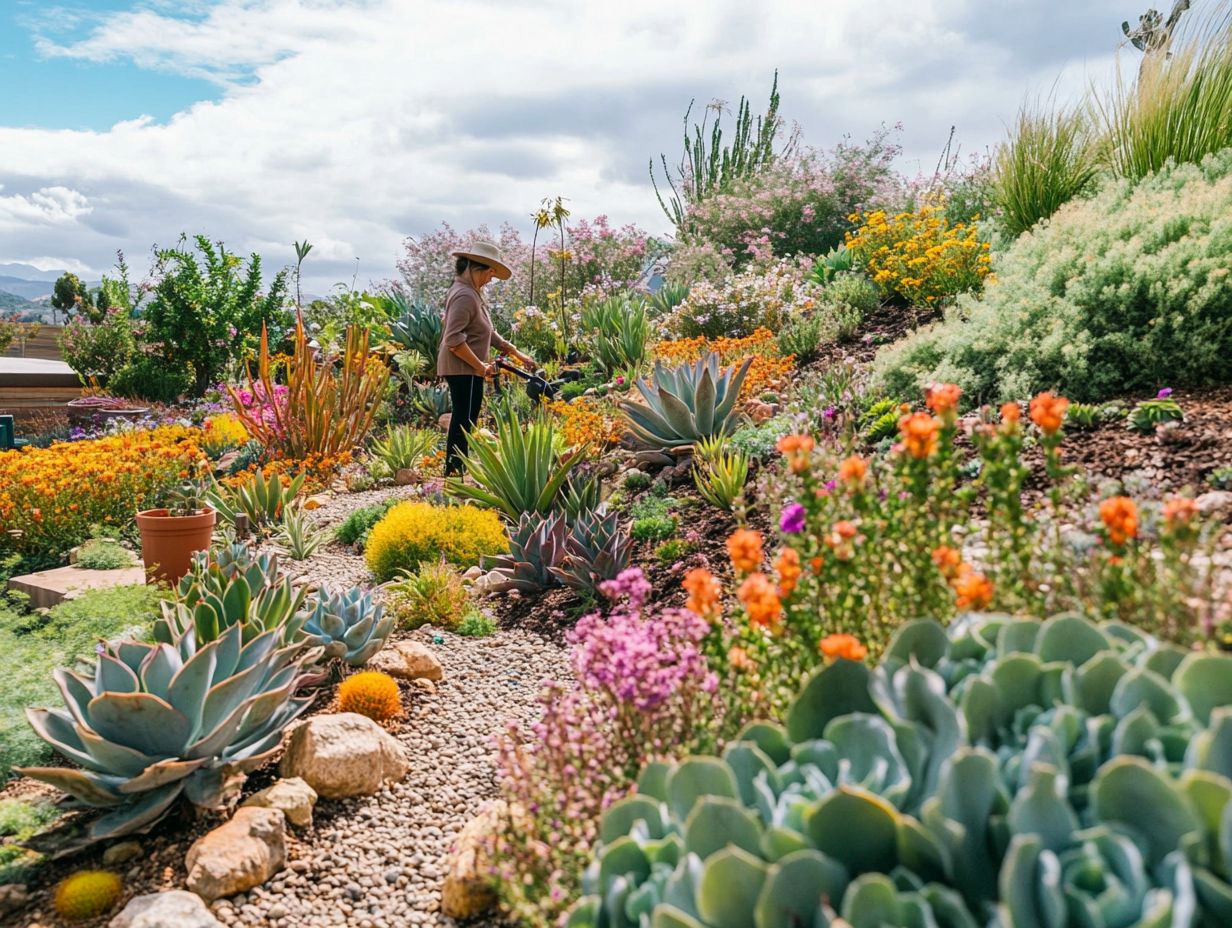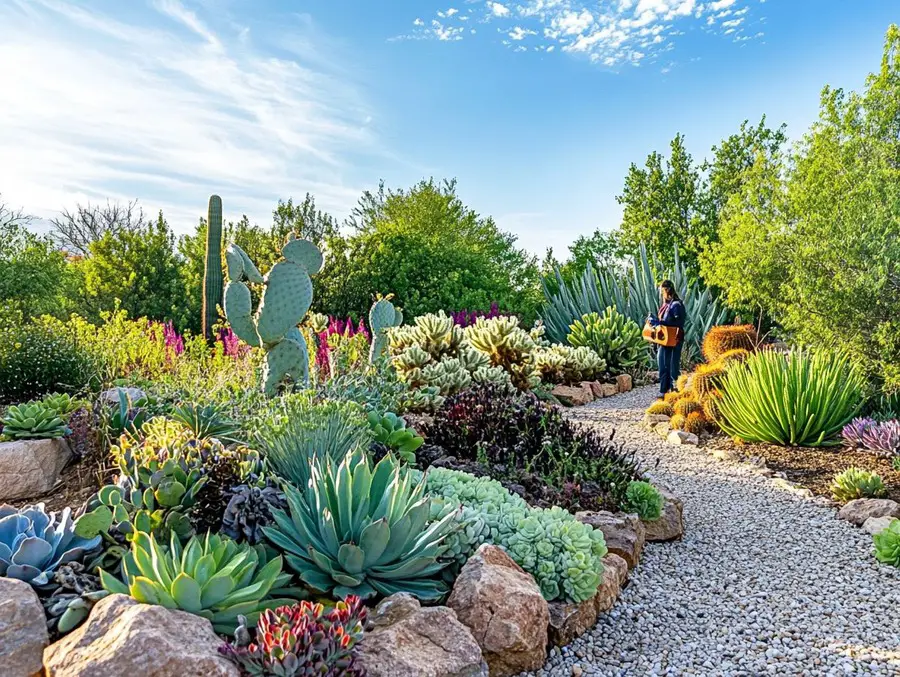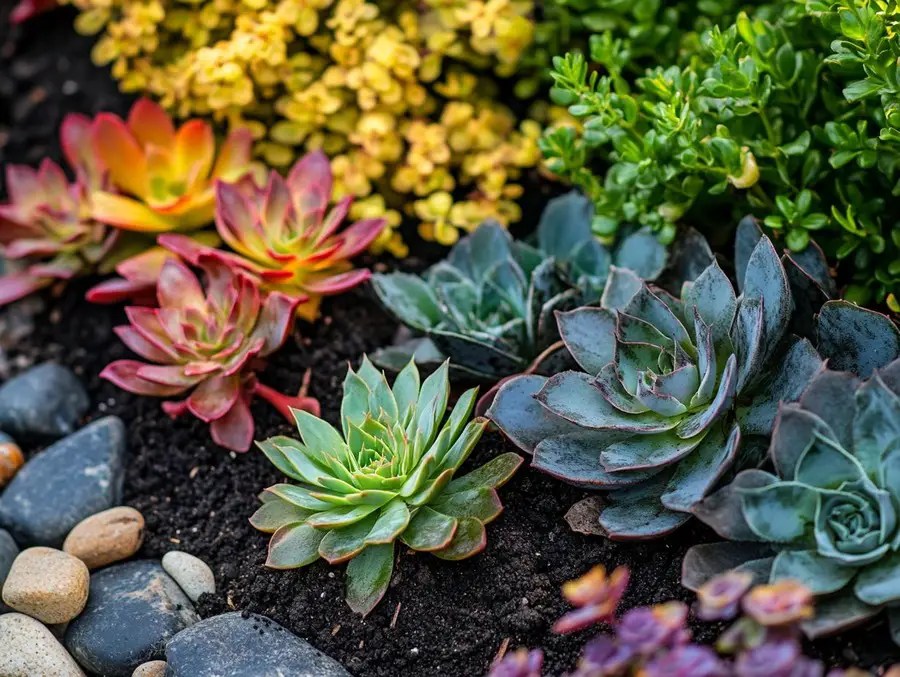We use affiliate links. If you purchase something using one of these links, we may receive compensation or commission.
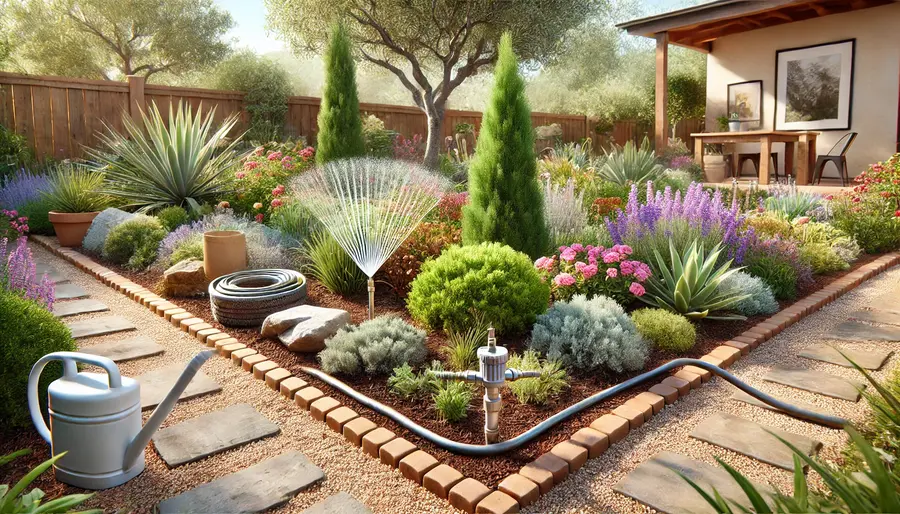
Budget-friendly xeriscaping for beginners makes it easy to create a beautiful, low-water yard without spending a fortune.
The problem? Many people think xeriscaping requires expensive materials and professional help.
The good news? You can do it yourself on a budget with smart plant choices, DIY techniques, and free or low-cost resources.
Budget-Friendly Xeriscaping
Key Takeaways
- Budget-Friendly Xeriscaping can save water and money with simple DIY techniques.
- Start small, choose native plants, use free mulch, and collect rainwater.
- Repurpose materials like bricks and rocks for pathways.
- With smart planning, you can create a beautiful, drought-tolerant yard without overspending.
Budget-Friendly Xeriscaping for Beginners
Want a water-efficient yard without spending a fortune? Xeriscaping can help you save money while still creating a beautiful outdoor space.
The trick is knowing where to cut costs without sacrificing results.
In this guide, you’ll find easy, budget-friendly xeriscaping tips to get started, from affordable plant choices to DIY irrigation hacks.
Budget-friendly xeriscaping for beginners makes it easy to create a beautiful, low-water yard without draining your wallet.
Many people assume xeriscaping requires expensive landscaping materials or professional help.
The truth? You can transform your outdoor space on a budget with simple DIY techniques, affordable plant choices, and free or low-cost resources.
Why Xeriscaping is a Budget-Friendly Landscaping Option
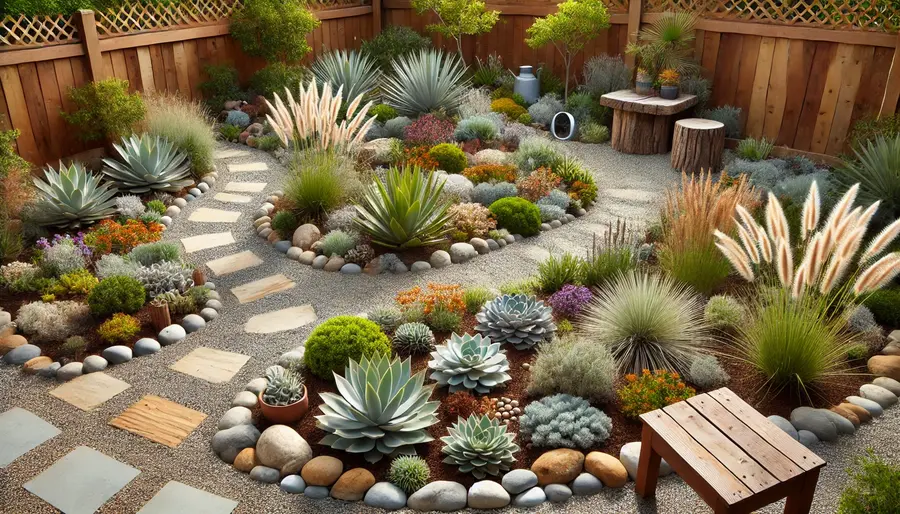
Xeriscaping isn’t just great for saving water. It’s also a smart way to cut costs on yard maintenance.
Traditional yards often rack up expenses for watering, mowing, fertilizing, and upkeep.
Switching to a low-water yard means you’ll spend less money over time while still enjoying a beautiful outdoor space. Here’s why it’s a budget-friendly choice:
✅ Lower Water Bills and Reduced Maintenance Costs
- Xeriscaping reduces water use by up to 75%, slashing your monthly utility bills.
- Less lawn means less mowing, fertilizing, and maintenance expenses.
- Drip irrigation and rainwater collection help water plants efficiently without waste.
✅ How Xeriscaping Saves Money Over Time
- Drought-tolerant plants require little upkeep, so you save on fertilizers and treatments.
- Mulch and ground covers reduce the need for weeding and watering.
- Hardscaping elements like gravel, pathways, and rocks are long-lasting and low-cost.
A budget-friendly xeriscape pays for itself over time, making it an affordable way to enjoy a stunning outdoor space without ongoing costs.
Cost-Effective Xeriscaping Strategies
Creating a beautiful xeriscape doesn’t have to cost a fortune. With a little creativity and smart planning, you can build a low-maintenance, water-saving yard without breaking the bank. Here are some budget-friendly strategies to get started.
Start Small with a DIY Approach
Xeriscaping an entire yard at once can feel overwhelming—not to mention expensive. The good news is, you don’t have to do it all at once.
- Convert one section at a time – Start with a small area, like a front yard corner or a backyard border.
- Use free online tools – Websites and apps can help you design a xeriscape plan without hiring a landscaper.
- DIY as much as possible – Digging, planting, and laying mulch yourself saves big on labor costs.
By taking it one step at a time, you’ll spread out costs while still making progress toward a drought-friendly yard.
Choose Affordable Drought-Tolerant Plants
You don’t need to buy expensive nursery plants to build a thriving xeriscape.
There are plenty of ways to source drought-tolerant greenery on a budget.
- Go native – Native plants naturally adapt to your climate and require little care. They’re often available at local plant swaps or discounted at garden centers.
- Collect seeds and cuttings – Many xeric plants, like succulents and sage, grow easily from cuttings or seeds you can collect from friends, neighbors, or local parks (where allowed).
- Shop end-of-season sales – Nurseries often mark down perennials at the end of the season, making it a great time to stock up.
Affordable plants are the backbone of a successful, budget-friendly xeriscape.
Use Mulch and Ground Covers to Reduce Maintenance
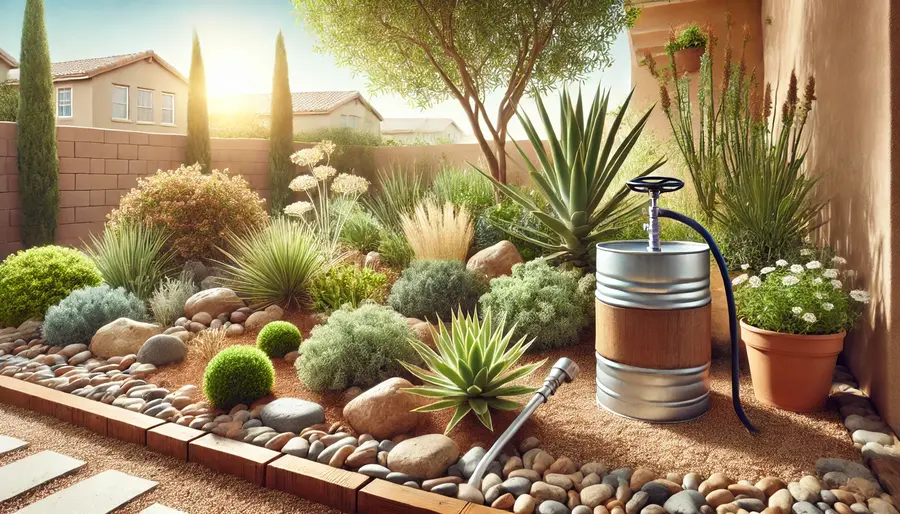
Bare soil dries out fast, leading to more watering and weeding.
Mulch and ground covers keep moisture in and weeds out, saving time and money.
- Look for free mulch – Many cities offer free wood chips from tree trimming services. You can also collect fallen leaves or straw to use as mulch.
- Choose low-cost ground covers – Plants like creeping thyme and clover spread quickly, replacing traditional grass with something that requires little water or upkeep.
- Layer organic material – Newspaper, cardboard, or grass clippings beneath mulch help retain moisture even longer.
A good layer of mulch cuts back on watering needs while keeping your xeriscape tidy.
Repurpose and Reuse Materials
Hardscaping features like pathways, borders, and decorative rocks add structure to a xeriscape, but they don’t have to cost a fortune.
- Use reclaimed materials – Bricks, stones, and wood can often be found at salvage yards or online marketplaces for free or cheap.
- Check construction sites – Some sites give away leftover materials like gravel or broken concrete (which works great for stepping stones).
- DIY garden borders – Old logs, wine bottles, or even repurposed cinder blocks can create unique, low-cost edging.
Reusing materials saves money and gives your xeriscape a unique, personalized look.
Best Budget-Friendly Watering Solutions
Xeriscaping is all about cutting down water use, but even drought-tolerant plants need occasional watering especially when first getting established.
The good news? You don’t need an expensive irrigation system to keep your plants healthy.
Here are some low-cost watering methods that get the job done.
Drip Irrigation on a Budget
Drip irrigation delivers water directly to the base of your plants, reducing waste and evaporation.
Setting up a system doesn’t have to cost much if you get creative.
- DIY with old hoses – Poke small holes in an old garden hose, place it around your plants, and let water seep out slowly.
- Use soaker hoses – These are an affordable alternative to full irrigation systems and work well when buried slightly under mulch.
- Upcycle plastic bottles – Bury a plastic bottle with small holes near plant roots, fill it with water, and let it release moisture slowly.
These simple tricks help your xeriscape thrive while keeping your water bill low.
Rain Barrel Collection Systems
Why pay for water when you can collect it for free? A rain barrel system stores rainwater from your roof, giving you a natural irrigation source.
- Use a repurposed barrel – Food-grade barrels or even large trash bins make great DIY rain barrels.
- Install a downspout diverter – This directs water from your gutter into the barrel, keeping it full with every rainfall.
- Water by hand – A simple spigot and hose attachment lets you water plants directly from the barrel.
Rainwater is free, chemical-free, and perfect for keeping a xeriscape hydrated.
Budget-Friendly Xeriscaping for Beginners FAQs
Xeriscaping doesn’t have to break the bank! Many beginners worry about costs, but with a little creativity, you can build a stunning, water-efficient yard for less.
Here are answers to common questions about saving money while xeriscaping.
Q. Can you xeriscape on a tight budget?
A. Yes! Start small, choose low-cost native plants, use free mulch, and repurpose materials like rocks or bricks. Rain barrels and drip irrigation also cut costs.
Q. What are the cheapest plants for xeriscaping?
A. Drought-tolerant perennials like lavender, yarrow, and sedum are affordable. Native wildflowers and grasses are also budget-friendly and thrive with little water.
Q. How can I get free or cheap mulch?
A. Check with local tree services, community compost programs, or city recycling centers for free mulch. Leaves, grass clippings, and wood chips work too.
Q. Is xeriscaping expensive to maintain?
A. No! Once established, xeriscaped yards need minimal watering, weeding, and upkeep. It’s a one-time investment that pays off in long-term savings.
Q. Can I use recycled materials for xeriscaping?
A. Absolutely! Old bricks, pavers, and reclaimed wood can be used for edging and pathways. Check local salvage yards or online marketplaces for deals.
Xeriscape Garden Design & Layout: Easy Water-Wise Beauty
What is xeriscaping? A beginner’s guide to drought-tolerant landscaping
Related Content
Visit my Amazon Influencer Page for videos and gardening products Grow Your Own Garden

